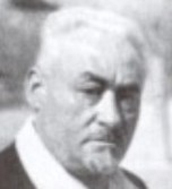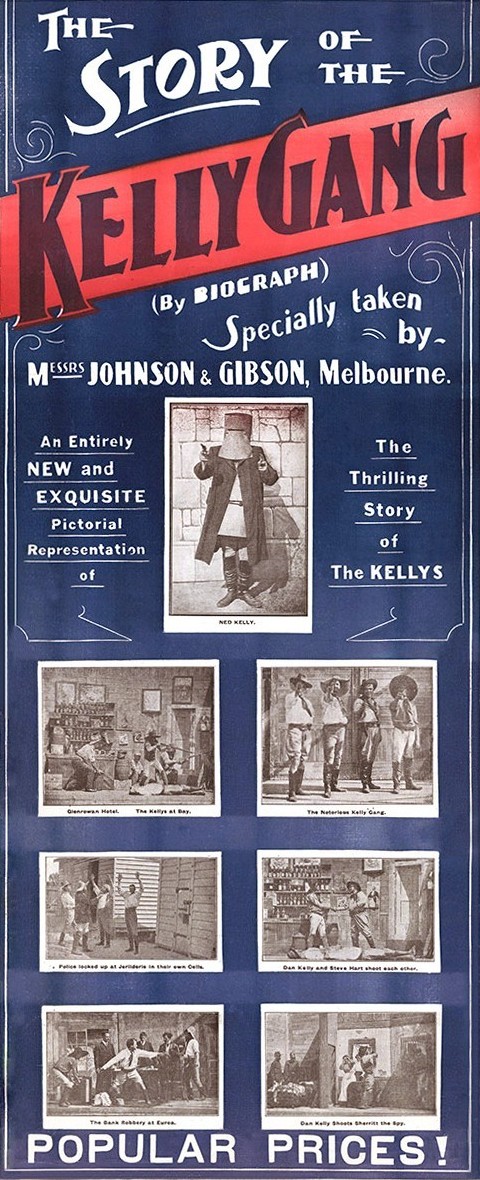
- Jinnistan
- Administrator
 Offline
Offline 
Re: The Jinnistan Museum of Cinema Illuminaries
Meanwhile, Edison's first primary film director, William Dickson, had by the turn of the century defected and started his own production company, American Mutoscope and Biograph Company, and lawsuits ensued. In 1903, Dickson released a version of Rip Van Winkle that was a compilation of eight short films shot between 1896-97.
- Jinnistan
- Administrator
 Offline
Offline 
Re: The Jinnistan Museum of Cinema Illuminaries
In 1904, Melies continued with another take on the Faust play (though the titles are frequently confused in English translation, the French titles are Faust aux enfers and Damnation du docteur Faust respectively), and revisiting Jules Verne with another classic adaptation, Impossible Voyage. Unfortunately, Melies other long-form work from this year, a version of Barber of Seville, no longer survives. Only a fragment of Faust survives, with the only known hand-tinted scenes in a private collection.
- •
- Jinnistan
- Administrator
 Offline
Offline 
Re: The Jinnistan Museum of Cinema Illuminaries
In addition, the prolific Melies continued to churn out numerous inventive short films.
- •
- Jinnistan
- Administrator
 Offline
Offline 
Re: The Jinnistan Museum of Cinema Illuminaries
Gaston Velle was another French director, inspired by Melies' Verne adaptations to attempt one of his own with the 1904 Drama in the Air, an adventure on a hot-air balloon.
In 1905, Velle followed up with the successful fairy tale, The Hen That Laid the Golden Eggs, a colorful film featuring camerawork and effects by Segundo de Chomon, soon to be an illuminary in his own right. That same year, Velle also collaborated with Ferdinand Zecca on another French fantasy classic, L'Amant de la Lune (The Moon Lover) aka Reve a la Lune (Dream of the Moon).
- •
- Jinnistan
- Administrator
 Offline
Offline 
Re: The Jinnistan Museum of Cinema Illuminaries
Interestingly, during this period, Zecca and his Quixote collaborator Lucien Nonguet were more focused on politically oriented films, with Zecca making two films adapted from Emile Zola's novel Germinal, these being 1904's The Strike and 1905's Au Pays Noir about working class coal miners. Nunguet meanwhile was making the re-enactment films Revolution in Russia and Assassination of Grand Duke Serge, based on current events in Russia during 1905. These events have somewhat been obscured by the later Franz Ferdinand and Bolshevik Revoution, but Nungeut's Revolution dramatizes the events onboard the Potemkin a good 20 years before Eisenstein's Battleship.
- •
- Jinnistan
- Administrator
 Offline
Offline 
Re: The Jinnistan Museum of Cinema Illuminaries
I tried to let the posts breathe a little to hopefully help with the lag-time for the videos.
- •
- Jinnistan
- Administrator
 Offline
Offline 
Re: The Jinnistan Museum of Cinema Illuminaries
In 1905, Alice Guy made the first adaptation of Victor Hugo's Hunchback of Notre Dame called Esmeralda. This ten minute film survives but is not available on Youtube or the Internet Archive.
Here is her other ten minute film from 1905, L'Espagna, and two short Spanish-themed shorts from the same year.
- •
- Jinnistan
- Administrator
 Offline
Offline 
Re: The Jinnistan Museum of Cinema Illuminaries
Additional collaborations between Gaston Velle and Segundo de Chomon from 1905-06
- •
- Jinnistan
- Administrator
 Offline
Offline 
Re: The Jinnistan Museum of Cinema Illuminaries
The creme of Georges Melies' 1905 films.
- •
- Jinnistan
- Administrator
 Offline
Offline 
Re: The Jinnistan Museum of Cinema Illuminaries
A couple of 1906 shorts from Walter Booth and Robert Paul, inspired by Melies, far below the scale that he was then working but still shows early ingenuity.
- •
- Jinnistan
- Administrator
 Offline
Offline 
Re: The Jinnistan Museum of Cinema Illuminaries
Segundo de Chomon
A Spanish filmmaking pioneer who worked as a technician for the French Pathe brothers and collaborating with Gaston Velle and Ferdinand Zecca as a cinematographer or co-director (see above posts). By the latter half of the first decade of the 20th Century, Chomon had eclipsed his other French peers to stand as the most visually inventive early French filmmaker second only to his primary influence, Melies.
Chomon made several documentaries and reenactment dramas from 1901-05 but by 1906, he began making his own original shorts involving stop-motion animation and hand-painted frames. Here's a collection of some of the surviving 1906 films.
- •
- Jinnistan
- Administrator
 Offline
Offline 
Re: The Jinnistan Museum of Cinema Illuminaries
Segundo de Chomon continued working with Gaston Velle, and in the same year, 1906, they collaborated on another stunning short, The Rajah's Casket.
- •
- Jinnistan
- Administrator
 Offline
Offline 
Re: The Jinnistan Museum of Cinema Illuminaries
Albert Capellani was an important creative designer at Pathe Studios in Paris, but who directed some films himself, such as this early version of Aladdin.
Another French fantasy from 1906 was from the relatively minor filmmaker Charles Lucien-Lepine, again in the undeniable infuence of Melies.
- •
- Jinnistan
- Administrator
 Offline
Offline 
Re: The Jinnistan Museum of Cinema Illuminaries
An embarrassment of riches, it seems, these pages of two or three dozen Youtube clips are becoming a bit unyieldy for boardhost. I think I'll try to eat up some posts with some international notes. And feel free to add any commentary guys. Just because it's a museum doesn't mean you cannot touch.
- •
- Jinnistan
- Administrator
 Offline
Offline 
Re: The Jinnistan Museum of Cinema Illuminaries
The first film from the Balkans by the Manaki brothers, The Weavers, a one minute documentary of ethnic Aromanian women making cloth. (1905)
- •
- Jinnistan
- Administrator
 Offline
Offline 
Re: The Jinnistan Museum of Cinema Illuminaries
The first Chinese film was 1905's Dingjun Mountain, featuring a singer from the opera of the same name, taken from the classic Romance of the Three Kingdoms. The film is now lost, and I have no idea if, like similar Western films, it included synchronized phonographic sound.
- •
- Jinnistan
- Administrator
 Offline
Offline 
Re: The Jinnistan Museum of Cinema Illuminaries

One of the earliest notable Italian filmmakers is Filoteo Alberini, who in 1905 produced a nine minute historical reenactment of The Capture of Roma, the unification of Italy in 1870. Only six minutes of the film survives.
- •
- Jinnistan
- Administrator
 Offline
Offline 
Re: The Jinnistan Museum of Cinema Illuminaries
One final spurt of Melies for the page, his 1906 work. By this time, due both to piracy and imitators flooding the film market, Melies was starting to push outside of fantasy films for some of his longer projects. Although he had set the foundation for the "crime" cinema with his Dreyfus Affair series, he resorted to basically remaking his collegue Ferdinand Zecca's 1901 History of a Crime for a feature entitled A Desperate Crime. Only a fragment of this film survives. He also took influence from the competing studio Pathe by producing the more Dickensian Chimney Sweep, which only a fragment survives as well. But his fantastique wellspring was hardly dry, and he added an outlaw comedy as well.
- •
- Jinnistan
- Administrator
 Offline
Offline 
Re: The Jinnistan Museum of Cinema Illuminaries
And two of his 1906 shorts
- •
- Jinnistan
- Administrator
 Offline
Offline 
Re: The Jinnistan Museum of Cinema Illuminaries

At the end of 1906, an Australian film would make the claim to being the first "feature" motion picture of all time. At 60 minutes' length, it's a good step in the direction of what would become the standard, and a good 15 minutes longer than the previous longest film, Zecca's 45 minute Life and Passion of the Christ. (To be accurate, there were a handful of films which were more of what we would consider "full-length", at 90 to 120 minutes, but these were filmed boxing matches, not narratives.)
Story of the Kelly Gang was an enormous success in Australia, and screened across the Empire. Today, only about 17 minutes has been salvaged. I'm not going to post the footage here, because it doesn't stand up in visual interest, but it's easily available. Ths would be the only significant film made by Aussie Charles Tait.
- •
A lot of people don't realize what's really going on. They view life as a bunch of unconnected incidents and things. They don't realize that there's this lattice of coincidence that lays on top of everything. Give you an example; show you what I mean: suppose you're thinking about a plate of shrimp. Suddenly someone'll say, like, plate, or shrimp, or plate o' shrimp out of the blue, no explanation. No point in looking for one, either. It's all part of a cosmic unconciousness.
Everybody's into weirdness right here.
